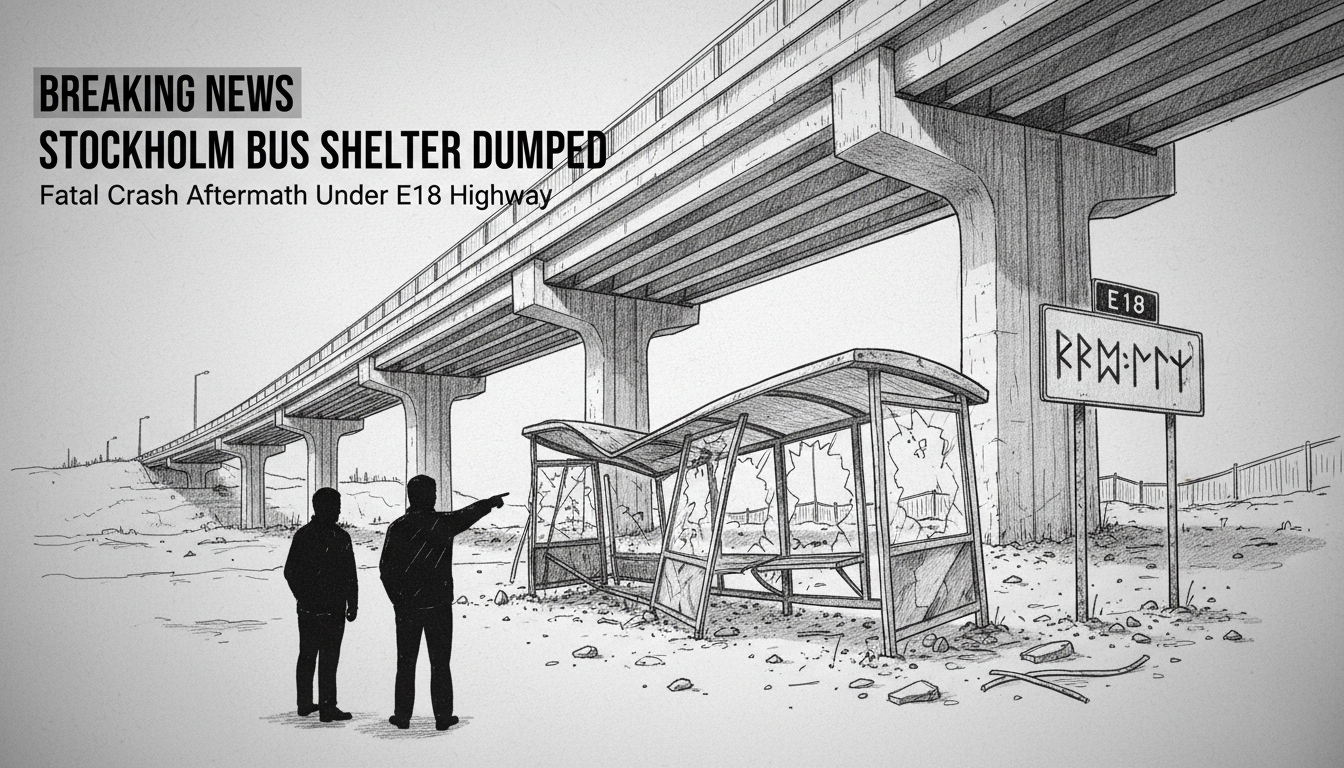A damaged bus shelter from the same Stockholm stop where three people died in Friday's tragic accident has been discovered abandoned beneath a highway. The shelter was found on a parking area under the E18 motorway near the Natural History Museum.
Residents first noticed the wreckage on Saturday and expressed confusion about why it was dumped there. The location is close to the scene of Friday's fatal collision where a bus plowed through a shelter, killing three people and injuring others.
Police initially expressed complete bafflement about the shelter's placement. Officers confirmed they had no knowledge of how the damaged structure ended up beneath the highway. The transportation company responsible for maintaining bus shelters also denied involvement in moving the wreckage.
One local resident who discovered the shelter described the situation as inappropriate given the recent tragedy. He noted that people lost their lives at that very bus stop and others remain hospitalized. The resident questioned why authorities would dump the shelter near a public road when proper recycling facilities exist for metal materials.
Stockholm Traffic Office officials later provided clarification. They explained the shelter was temporarily placed beside a municipal technical area used for storing equipment and machinery. A spokesperson said they needed to clear the accident scene quickly and this was the best available solution at the time.
The official acknowledged public distress over the shelter's placement but emphasized the unexpected nature of the situation. Crews worked overnight to manage the aftermath of the fatal crash and made quick decisions about where to store damaged infrastructure.
This incident highlights the challenges cities face when responding to unexpected tragedies. The need for rapid cleanup after fatal accidents sometimes leads to temporary solutions that appear insensitive to grieving communities. Stockholm's handling of this situation demonstrates how emergency response protocols can conflict with public sentiment during mourning periods.
Transportation authorities now face questions about their procedures for handling crash debris. The visibility of the damaged shelter beneath a major highway has drawn attention to what typically happens with wreckage from fatal accidents. Many residents expected the structure to be removed to a secure facility rather than stored in public view.
The situation raises broader questions about how cities memorialize sites of public tragedies. Some communities preserve elements from accident scenes as memorials, while others prefer complete removal. Stockholm's approach of temporary storage suggests authorities haven't yet determined the shelter's final disposition.
International readers should understand that Swedish authorities generally maintain high standards for public space management. This unusual incident represents a departure from typical Nordic efficiency in urban maintenance. The temporary solution likely resulted from the unprecedented nature of Friday's fatal crash rather than standard operating procedures.

